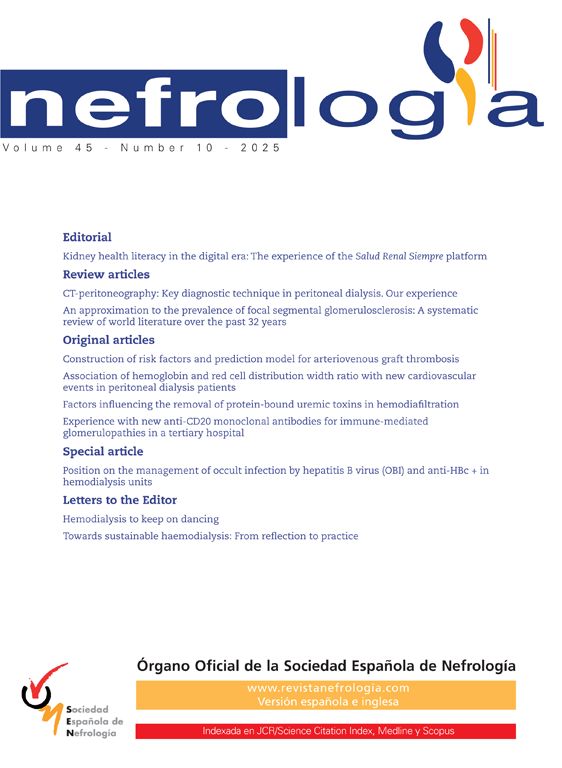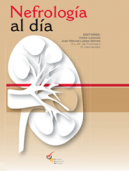To the editor: Hypogammaglobulinemia in nephrotic syndrome (NS) is a condition attributable to increased catabolism and urinary loss of immunoglobulins.1,2
Patients with NS have an increased risk of infection, primarily caused by capsulated germs (pneumococci, Hemophilus influenzae).3,4 There is evidence suggesting that IgG2 are antibodies protecting against pneumococci.
Our purpose was to study recovery of the different immunoglobulin subclasses in patients with NS treated with methylprednisone and deflazacort during remission and relapse.
PATIENTS AND METHODS
Eleven patients with a mean age of 48 months (range, 16-52 months) were studied. An interventional, single blind, clinical study, randomized for treatment start and with treatment crossover after the first relapse, was designed.
Methylprednisone (MPD) was given at 48 mg/m2/day for 6 weeks, followed by 2/3 of the dose every other day for
the next 6 weeks.
The equivalent dose of deflazacort (DFZ) was 72 mg/m2/day (maximum 90 mg/day), with the same therapeutic scheme.
Blood samples were taken at relapse and 40 days after remission was achieved to measure total IgG and its subclasses by the radial immunodiffusion method.
RESULTS
Mean times on remission were 7.8 ± 0.36 days with MPD and 8.3 ± 0.22 days with DFZ.
Mean times to relapse were 85 ± 3.8 days with MPD and 102 ± 4.19 days with DFZ.
Both total IgG and IgG1 similarly recovered with both corticosteroids, but IgG2 and IgG3 only significantly increased with DFZ. Percent recovery of IgG and its subclasses was asymmetric during remission.
IgG1 showed the greatest recovery, while IgG2 reached 50% of normal value. The same imbalance was found with both treatments.
While this was not considered as an objective, it may be stated that the incidence rate of infection by capsulated germs was not significant with both corticosteroids (p0.12) and that less adverse effects occurred when DFZ was used (hypertrichosis, Cushingoid appearance, ocular hypertension, hyperglycemia).
CONCLUSIONS
We found an imbalance in recovery of IgG subclasses during remission of NS treated with both corticosteroids, but a better recovery of such levels was achieved with DFZ.
The Impact Factor measures the average number of citations received in a particular year by papers published in the journal during the two preceding years.
© Clarivate Analytics, Journal Citation Reports 2025
SRJ is a prestige metric based on the idea that not all citations are the same. SJR uses a similar algorithm as the Google page rank; it provides a quantitative and qualitative measure of the journal's impact.
See moreSNIP measures contextual citation impact by wighting citations based on the total number of citations in a subject field.
See more




